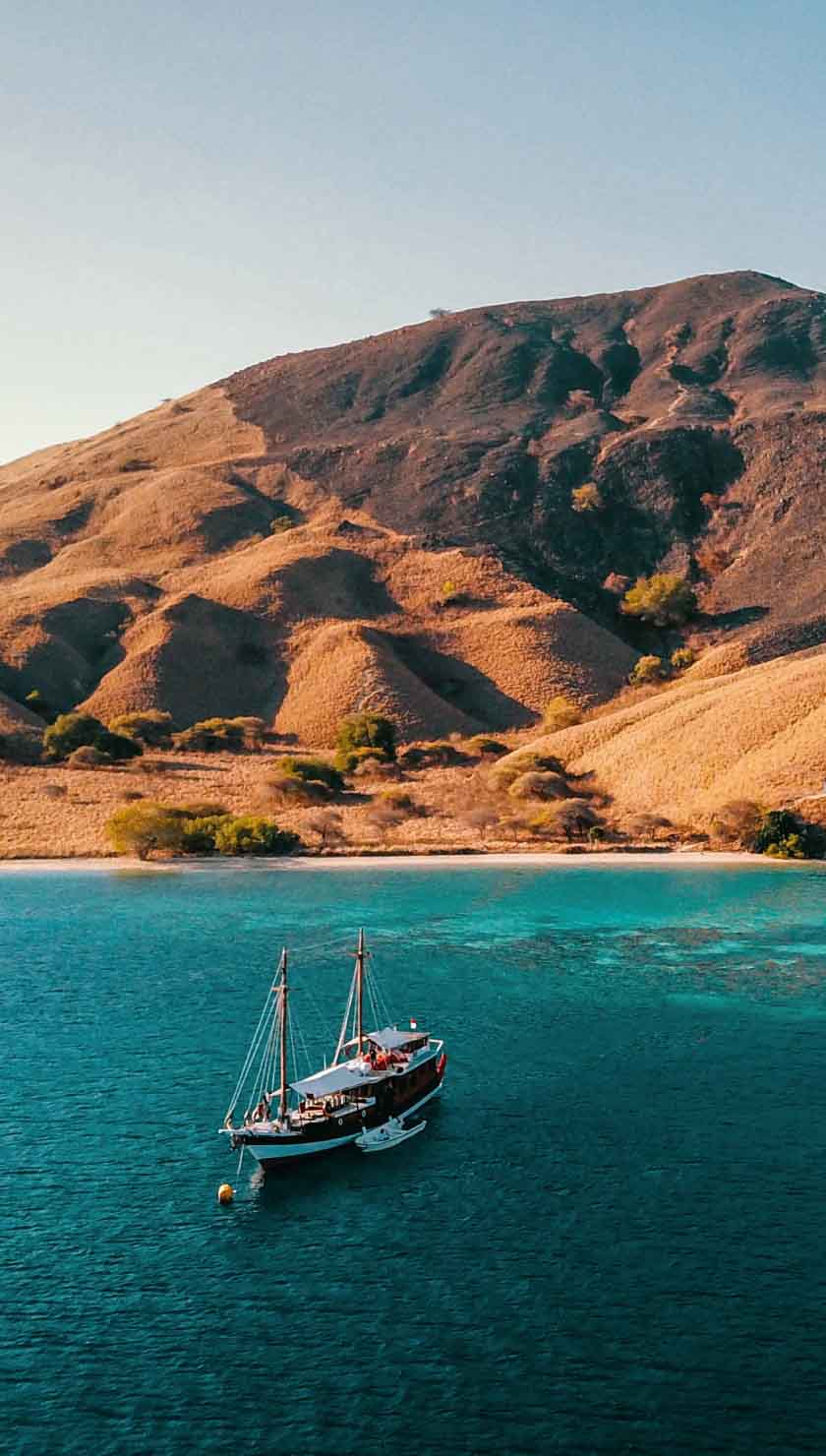Best Time to Cruise the Galápagos: Wildlife & Weather Guide
Galápagos—seasons, wildlife, and volcanic landscapes
Choosing the best time to cruise the Galápagos isn’t about finding a single “perfect” month—it’s about understanding how this living, volcanic world transforms from season to season. Whether you’re hiking lava fields on Isabela Island, snorkeling with playful sea lions beneath Pinnacle Rock on Bartolomé, or walking among the giant tortoises of Santa Cruz Island, each month reveals a new expression of nature. Wildlife breeds, nests, dances, migrates, and hunts according to ancient cues shaped by the Pacific Ocean’s powerful currents.
A small-ship cruise lets you witness these cycles up close. Days unfold through guided landings at iconic sites like Española Island, Fernandina Island, and North Seymour Island, where animals remain astonishingly unafraid. Even the human heart of the archipelago—Puerto Ayora and the Charles Darwin Research Station—shifts with the seasons, from bustling conservation programs to quiet evenings along the waterfront. By understanding these rhythms, you can match your 2025 journey with the wildlife, weather, and sea conditions you’re most excited to experience.
This guide reveals how each month shapes the islands’ character, from the warm-water clarity of March to the nutrient-rich currents of September. Whether you envision photographing blue-footed boobies on North Seymour, watching albatrosses court on Española, or snorkeling beneath volcanic cliffs on Isabela, planning around the Galápagos' natural calendar will deepen every moment aboard one of our Galápagos small-ship cruises.
Understanding Galápagos Seasons
The archipelago experiences two main seasons: the warm, sunny, and wetter months from December to May, and the cooler, drier, and nutrient-rich season from June to November. The warm season brings calm seas and excellent underwater visibility—perfect for visiting iconic sites like Bartolomé, Pinnacle Rock, and the beaches near Puerto Ayora. The cooler season is shaped by the Humboldt Current, which fuels an extraordinary abundance of marine life around Isabela, Fernandina, and the rugged shores of San Cristóbal.
Wildlife adapts to these shifts: land birds court, sea lions pup, marine iguanas feed, and giant tortoises migrate across highlands. Yet what sets the Galápagos apart is its year-round reliability—no month is “off-season.” Each island offers remarkable sightings, from the red-footed boobies of Genovesa to the photogenic volcanic landscapes of Santiago and the pristine lava fields of Fernandina.
Small ships excel in this area because they can adjust their routes based on wildlife reports, tides, and sea conditions. Want to catch frigatebird displays on North Seymour? Or visit Española when albatrosses fill the cliffs? A small vessel offers the flexibility and intimacy that define a genuine Galápagos experience.
Month-by-Month Guide: Best Time to Cruise the Galápagos in 2025
January: Warm Seas, Nesting Sea Turtles
January brings warm waters ideal for snorkeling at Bartolomé and Pinnacle Rock. Temperatures hover around 25–27°C (77–81°F), creating crystal conditions near Santa Cruz and San Cristóbal. Green sea turtles nest on beaches, marine iguanas display vivid breeding colors, and afternoon showers turn the highlands lush—especially around Puerto Ayora.
February: Clear Waters & Courtship Rituals
February offers excellent underwater visibility at sites like North Seymour, where frigatebirds inflate scarlet pouches during courtship. Penguins around Isabela appear frequently, and calm seas make landings on Española and Bartolomé accessible. Warm currents attract schools of reef fish, making it a favorite month for marine lovers.
March: Peak Warmth & Marine Life Activity
March delivers the warmest waters of the year—ideal for snorkeling with sea lions near Pinnacle Rock. Afternoon rain showers enhance vegetation on Santa Cruz and Isabela. Waved albatrosses begin returning to Española, and marine iguanas nest along black-sand shores. It’s an immersive time for both land and sea wildlife.
April: Calm Seas & Abundant Wildlife
Considered one of the best overall months, April brings calm seas around Santa Cruz, San Cristóbal, and Isabela. Sea lion pups thrive, penguins feed vigorously, and giant tortoises wander lush highlands near Puerto Ayora. Blue skies illuminate the volcanic shapes of Bartolomé, making this a photographer’s dream.
May: Transition Season Beauty
May blends warm-season clarity with the first hints of nutrient-rich waters. Blue-footed boobies begin their dances on North Seymour, while sea turtle hatchlings emerge along quiet beaches. Underwater life remains active across Fernandina and Isabela. The weather is mild, the seas are comfortable, and visitor numbers are slightly lower.
June: Cooler Waters, Richer Feeding Grounds
June introduces the Humboldt Current, which cools the waters to 20–23°C (68–73°F) and creates exceptional feeding conditions around Fernandina and the western coast of Isabela. Astonishing marine activity follows—penguins, rays, and sea lions hunting. Foggy garúa mist softens landscapes on San Cristóbal and Santa Cruz, adding a dramatic coastal atmosphere.
July: Whale Season Begins
July marks the arrival of migrating whales in deeper channels near Isabela. Choppy seas bring cooler winds, but the rewards for wildlife are significant. On Española, waved albatrosses perform elaborate courtship rituals. North Seymour remains a highlight for bird lovers, with active frigatebird colonies and dancing boobies.
August: Penguin Sightings & Breezy Afternoons
August offers peak penguin activity, especially around Fernandina and the west of Isabela. Breezes cool the afternoons, creating pleasant hiking conditions on San Cristóbal and Santa Cruz. Snorkelers may encounter marine iguanas grazing underwater and sea lions showing off acrobatics near Pinnacle Rock.
September: Peak for Marine Wildlife
September is the height of nutrient-rich waters—ideal for advanced snorkelers seeking big marine life. Whale and dolphin sightings increase near Isabela. Land temperatures stay cool, ideal for long walks across Española and Bartolomé. Although the seas can be rougher, the wildlife density is unmatched.
October: Underwater Visibility & Blue Skies
October brings clearer skies as the garúa fades. The waters begin warming, making snorkeling more comfortable around Pinnacle Rock and San Cristóbal. Sea lion pups become confident swimmers, and giant tortoises move across the humid highlands of Santa Cruz. Visibility improves around North Seymour, attracting underwater photographers.
November: Sun, Calm Seas & Juvenile Wildlife
November offers a sweet spot: calmer seas returning, warmer waters, and abundant juvenile wildlife. Young sea lions at Española and San Cristóbal approach snorkelers with curious confidence. Frigatebirds prepare for displays on North Seymour. It’s ideal for families and travelers wanting wildlife without rough seas.
December: Breeding Season & Holiday Departures
December marks the return of the warm season, bringing brighter skies around Santa Cruz and Bartolomé. Sea turtles begin mating off pristine beaches, and giant tortoises roam the highlands near Puerto Ayora. Calmer conditions make holiday itineraries especially appealing, with vibrant wildlife at every turn.
Highlights of Cruising the Galápagos by Small Ship
Wildlife Encounters That Change with the Seasons
From albatross colonies on Española to sea lions at San Cristóbal and penguins on Isabela, small ships bring you to seasonal wildlife hotspots impossible to experience all at once.
Expert Naturalists & Interpretive Guided Excursions
Visits to Isabela, Santa Cruz, Bartolomé, North Seymour, and Fernandina are enriched by naturalists who reveal the geologic story and wildlife behaviors behind each island.
Snorkeling with Marine Iguanas & Sea Lions
Small ships let you snorkel the best coves—especially around Fernandina, Isabela, and Bartolomé—where marine iguanas graze and sea lions swirl through clear water.
Remote Islands & Limited Visitor Sites
With exclusive access to sensitive areas like Española, North Seymour, and Bartolomé, small ships ensure minimal crowds and maximum wildlife immersion.
Silent Nights on the Pacific Under a Thousand Stars
Anchored near volcanic shores, nights aboard feel timeless—especially when the silhouettes of Isabela or San Cristóbal rise beneath star-filled skies.
Choosing the Best Time Based on Your Priorities
If warm-water snorkeling is your priority, choose January to April for calm seas and clear conditions near Bartolomé, Pinnacle Rock, and Santa Cruz.
If you’re a marine wildlife enthusiast, June to November offers peak activity around Isabela and Fernandina, though seas can be livelier.
Bird lovers will find North Seymour and Española spectacular in May–July, when courtship rituals peak.
Something for Everyone
- Wildlife lovers who dream of close encounters on islands like Isabela, Española, and North Seymour.
- Adventure travelers eager to snorkel at Pinnacle Rock, hike Bartolomé, or explore Fernandina's lava fields.
- Explorers seeking connection who value the intimacy of a small ship and culturally rich stops, such as Puerto Ayora and the Charles Darwin Research Station.
Life Onboard a Small Ship in the Galápagos
Days unfold through Zodiac rides, landings on iconic islands, and briefings led by expert naturalists. Open decks offer panoramic views of Santa Cruz, Isabela, and San Cristóbal. Meals incorporate Ecuadorian flavors, while itineraries remain flexible—especially when wildlife appears near Bartolomé or North Seymour.
What to Pack for a Galápagos Cruise
Bring quick-dry clothing, sturdy shoes for volcanic terrain, eco-safe sunscreen, hats, a lightweight rain jacket, and a waterproof bag. Snorkeling gear—especially for remote sites like Fernandina or Isabela—is essential, along with camera gear protected for Zodiac landings.
Whenever you travel, the Galápagos reveals a different facet of its ancient, living soul. Explore our curated collection of small-ship cruises and find the perfect 2025 voyage into one of the world’s most extraordinary archipelagos.










